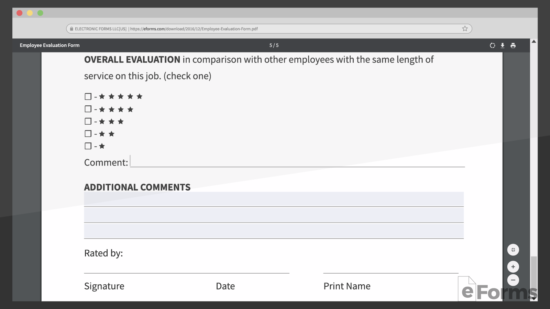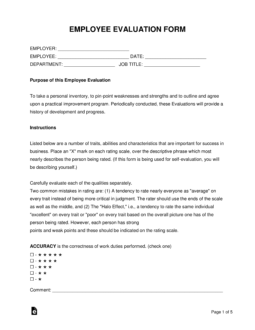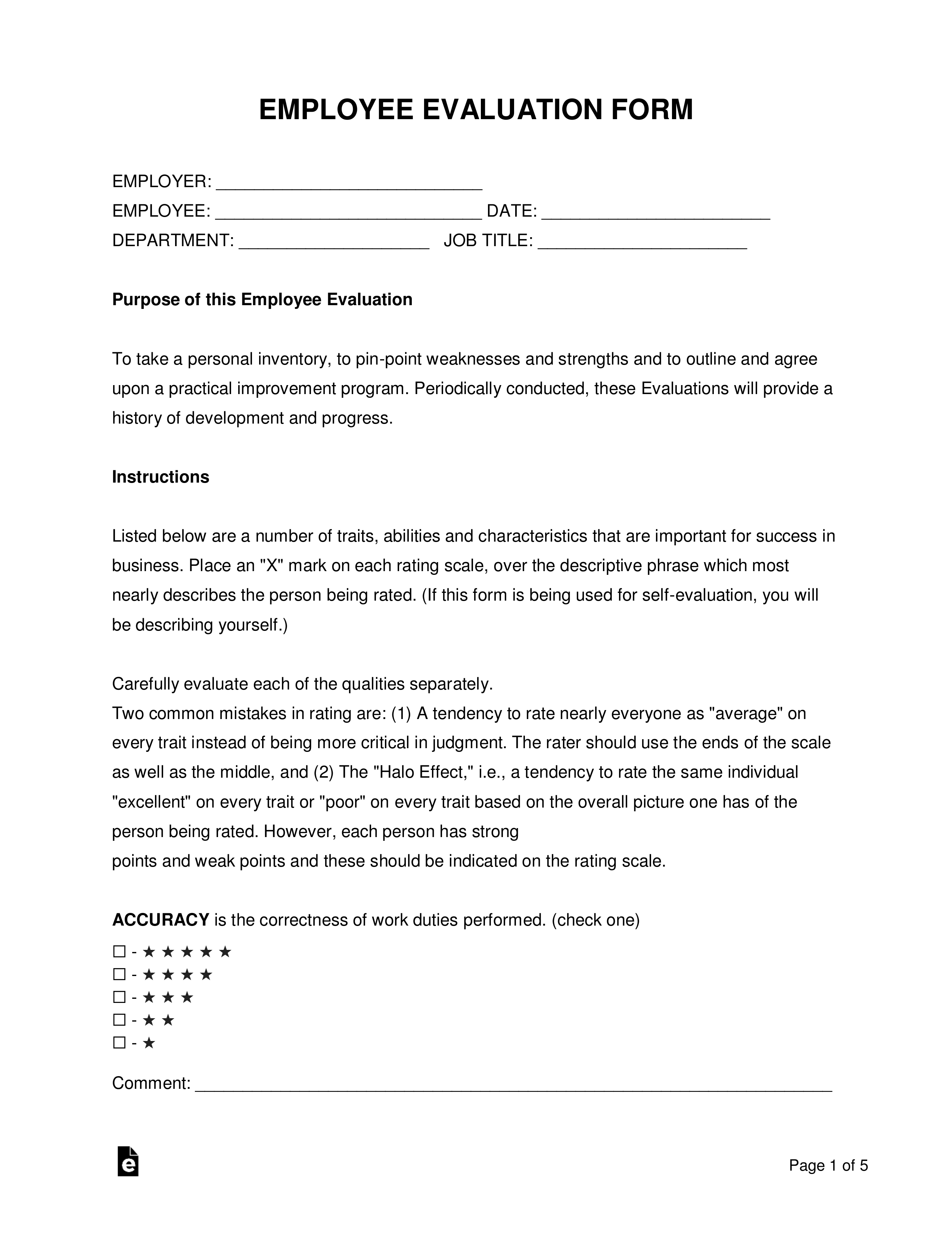Updated August 21, 2023
An employee evaluation form is a document that reviews an individual’s everyday working ability. By using the same form for each evaluation, the question of anyone feeling singled out is addressed by standardizing the way each employee is evaluated. That is, an employee will only be required to give an assessment regarding the same subject matter every other employee does.
Table of Contents |
How to Evaluate an Employee (4 steps)
- Evaluate Honestly
- Conclude and Review
- Give Proper Strong and Weak Points
- Discuss the Report with the Employee
Evaluating an employee depends on if you’re a customer, a co-worker, or a boss.
1. Evaluate Honestly

Management does not do its employees any favors by fluffing up evaluations with dishonest praise. At the end of the day, it is usually an employee’s real record that determines success or failure, and so workers deserve to be given accurate appraisals.
Even if the evaluator is the employee himself, a fair and constructive review will usually include both positive and negative points. To be human is to be imperfect, and the employee evaluation form used correctly is a powerful tool in supporting both individual growth and company-wide success. Without some variation in the evaluation results, it is nearly impossible to form a three-dimensional picture of the employee. What does it mean if an employee is entirely excellent or wholly poor? More than likely, it signifies an evaluation done wrong, not anything about the individual worker or her achievements at the company.
2. Conclude and Review

An employee evaluation is more than just the sum of the individual parts – it should provide a narrative about the employee’s performance and progress over the past year or period, specific directions for improvement, and an overall rating. It should paint a picture of the employee as a full person in context.
4. Discuss the Report with the Employee

The evaluation process should be regular and predictable. Results should be presented constructively to employees.
The workforce at a company will often span a spectrum – with a few standouts, some who are struggling, and a mass of satisfactory employees. For those failing to meet standards, the evaluation process provides a key opportunity to initiate a development plan or to put an employee on probation.
Why Do Companies Evaluate Employees?
Most companies evaluate their employees to know any weak links or dysfunction that may exist within their organization. After a company conducts its internal employee evaluation, the managers will decide exactly what to do about it. In most cases, a simple conversation with a poorly rated employee may be all there needs to be to improve their work ethic. If that cannot be attained then most likely the employee will be relieved of their duties.
How to Give Constructive Criticism
The best criticism is constructive. This means that the employee should understand what concrete steps can be taken to remedy the employee’s bad habits. Feedback should be given honestly, but delivery counts – so managers should take care to be supportive, not vindictive.
The best managers lead by example. A boss who shows humility by taking appropriate responsibility and shouldering criticism with grace encourages underlings to do the same.



